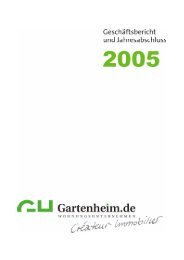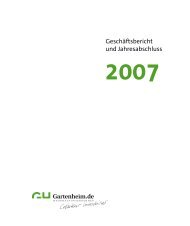analysis of the influences of solar radiation and façade glazing ...
analysis of the influences of solar radiation and façade glazing ...
analysis of the influences of solar radiation and façade glazing ...
Create successful ePaper yourself
Turn your PDF publications into a flip-book with our unique Google optimized e-Paper software.
1.2 Background <strong>and</strong> literature review 39<br />
The authors stated that an advanced control strategy (structural <strong>and</strong> control level), coupled<br />
with a considered storage tank, can lead to a significant increase in <strong>the</strong> <strong>solar</strong> fraction <strong>and</strong> a<br />
higher degree <strong>of</strong> comfort. However, an on/<strong>of</strong>f control system can be more suitable from a<br />
computational point <strong>of</strong> view.<br />
1.2.5 Summary <strong>of</strong> literature review<br />
The literature review shows that <strong>the</strong> impact <strong>of</strong> <strong>solar</strong> <strong>radiation</strong> on <strong>the</strong> <strong>the</strong>rmal behavior <strong>of</strong><br />
buildings is very complicated <strong>and</strong> still under investigation by scientists. The last decade<br />
has brought a large amount <strong>of</strong> research on particular aspects <strong>of</strong> this problem. But according<br />
to <strong>the</strong> author’s knowledge, <strong>the</strong>re is still not a comprehensive study which includes <strong>the</strong> wide<br />
scope <strong>of</strong> <strong>the</strong> current dissertation research. According to bibliographic searches, one can say<br />
that using detailed <strong>analysis</strong> techniques, i.e. <strong>the</strong> energy simulation method, may certainly<br />
lead to an accurate estimation <strong>of</strong> <strong>the</strong> dependence <strong>of</strong> building performance on <strong>solar</strong><br />
<strong>radiation</strong>. The newest simulation s<strong>of</strong>tware includes: annual wea<strong>the</strong>r data-bases that contain<br />
<strong>solar</strong> <strong>radiation</strong>, wind speed <strong>and</strong> direction, humidity <strong>and</strong> air temperature. This option<br />
enables one to model wea<strong>the</strong>r conditions throughout <strong>the</strong> year as well as during a particular<br />
period with very short time steps. It is especially important due to <strong>the</strong> strong dependence <strong>of</strong><br />
<strong>solar</strong> <strong>radiation</strong> on time. There are some works that have applied simplified methods, but<br />
<strong>the</strong>se types <strong>of</strong> steady-state procedures only give approximate results that may be seen in<br />
preliminary studies. Therefore, in order to prove <strong>the</strong> <strong>the</strong>sis <strong>of</strong> this dissertation, it was<br />
decided to apply <strong>the</strong> detailed simulation method based on <strong>the</strong> dynamic heat balance <strong>of</strong><br />
iso<strong>the</strong>rmal zones. As scientific literature shows, it is necessary to integrate balancing<br />
techniques with CFD algorithms to improve <strong>the</strong> accuracy <strong>of</strong> <strong>the</strong> calculation results. Mainly,<br />
this coupled method is recommended for analyzing large spaces <strong>and</strong> structures with more<br />
complicated ventilation air-paths. Considering a small volume <strong>of</strong> iso<strong>the</strong>rmal zones, <strong>the</strong><br />
author has decided to not take <strong>the</strong> CFD <strong>analysis</strong> into account. In <strong>the</strong> current work, it is<br />
assumed that a single apartment is a base energy balance cell. Fur<strong>the</strong>rmore, <strong>the</strong> detailed<br />
simulation method was chosen, as recommended in <strong>the</strong> literature, as <strong>the</strong> best tool for <strong>the</strong><br />
research <strong>of</strong> active <strong>solar</strong> domestic hot water, heating, ventilation <strong>and</strong> air conditioning<br />
systems. Simultaneous modelling <strong>of</strong> building <strong>the</strong>rmal behavior <strong>and</strong> <strong>the</strong> operation <strong>of</strong> plant<br />
<strong>and</strong> HVAC systems was employed by <strong>the</strong> author in order to achieve simulation results with<br />
physical reality.





